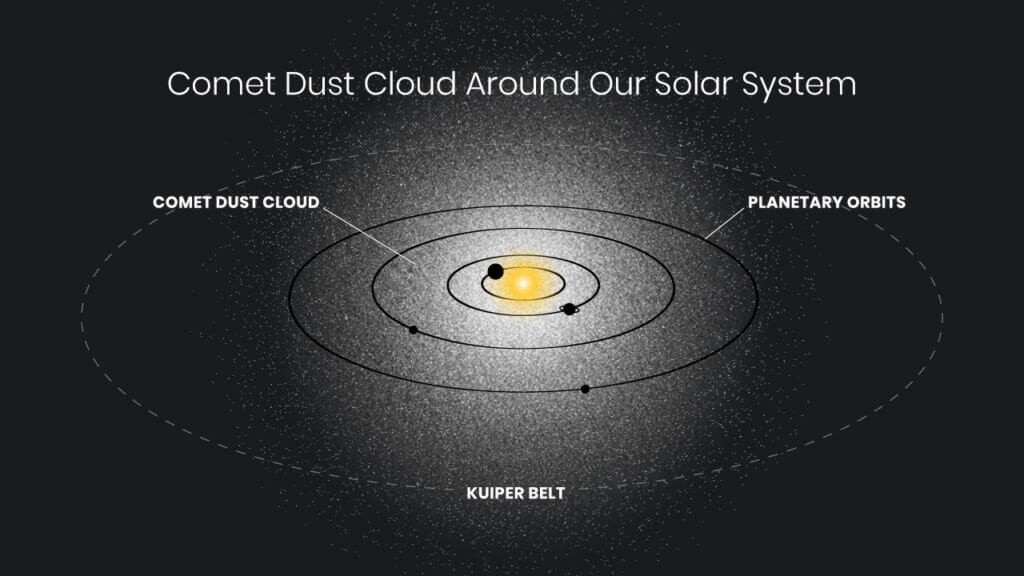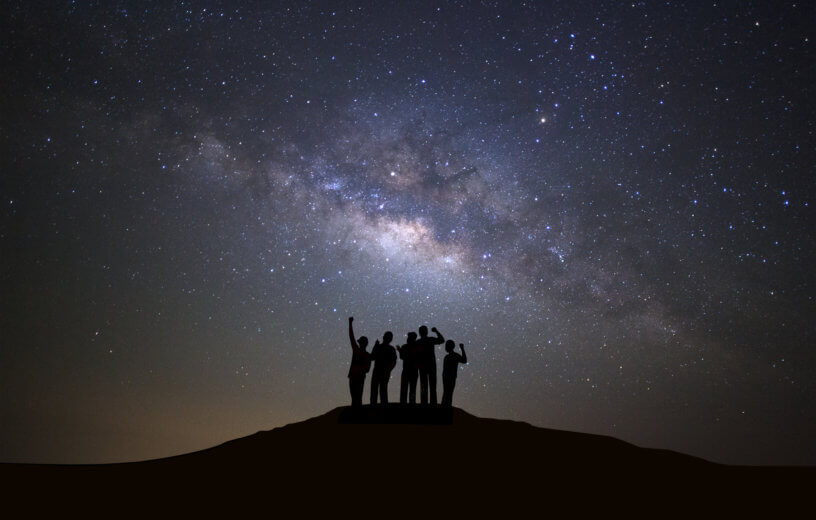GREENBELT, Md. — NASA astronomers have discovered a “ghostly glow” around our solar system that has nothing to do with twinkling stars or moonlight. Using over 200,000 photos taken by the Hubble Space Telescope, the team found residual light equivalent to the steady glow of 10 fireflies spread across the entire sky.
The tiny amount of light may not seem like much at first glance, but if you take away the light accounted for by stars, planets, dust, and galaxies, the researchers suggest it’s pretty hard to ignore. Think of turning out all the lights in a dark, windowless room — just to find that there’s still an eerie glow on the walls, ceiling, and floor.
If the light exists, what is the source?
Astronomers have some theories. One hypothesis is that the glow comes from our inner solar system, where a sphere of dust from comets is landing in our solar system from all directions. The glow, therefore, is the sunlight reflected off the floating dust. If confirmed, it could create a new addition to our map of the solar system.
While this theory is not proven yet, it has gathered a good amount of support from other astronomers in the field. This is because in 2021, a separate team of researchers gathered data from NASA’s New Horizons spacecraft that measured the sky background. The spacecraft passed by Pluto in 2015 and a small Kulper belt object in 2018. The probe is now coming back to interstellar space. New Horizons is estimated to be four to five billion miles from the Sun and would be outside the area of interplanetary dust.

Credits: NASA, ESA, and Andi James (STScI)
Solar system may have its own night light
During its travels, New Horizons detected a faint source of background light with no concrete explanation for its existence. At the time, theories ranged from light released from decaying dark matter to aliens in another galaxy.
“If our analysis is correct there’s another dust component between us and the distance where New Horizons made measurements. That means this is some kind of extra light coming from inside our solar system,” says Tim Carleton, an astronomer of Arizona State University, in a NASA media release. “Because our measurement of residual light is higher than New Horizons we think it is a local phenomenon that is not from far outside the solar system. It may be a new element to the contents of the solar system that has been hypothesized but not quantitatively measured until now.”
The idea to search for the ghostly light using Hubble came from veteran astronomer Rogier Windhorst.
“More than 95% of the photons in the images from Hubble’s archive come from distances less than 3 billion miles from Earth. Since Hubble’s very early days, most Hubble users have discarded these sky-photons, as they are interested in the faint discrete objects in Hubble’s images such as stars and galaxies,” explains Windhorst, who also does research at Arizona State University.
“But these sky-photons contain important information which can be extracted thanks to Hubble’s unique ability to measure faint brightness levels to high precision over its three decades of lifetime.”
The details of the research team’s findings are published in The Astronomical Journal and The Astrophysical Journal Letters.

